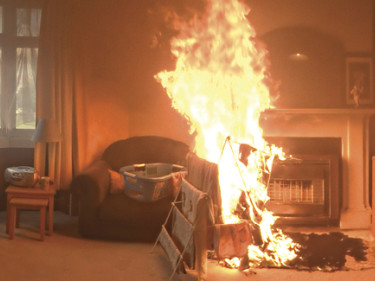Want to make sure your home is fire safe? Here's a quick and easy checklist you can use to spot any risks or hazards that might cause a fire.
Walk through your house and check off each point as you go. If a point doesn't apply to you (for example, if you don't have a fireplace), give it a tick.
This checklist is for people who own a house or apartment in the city or suburbs.
- If you're renting, check out our renter's home fire safety checklist.
- If you live rurally, check out our rural home fire safety checklist.
Kitchen
- The stovetop is clean and free of any spilled fats or burnt foods.
- The rangehood filters have been cleaned recently.
- There's a fire extinguisher near the kitchen and I know how to use it.
Living room and bedrooms
- There are smoke alarms installed in every bedroom, living area and hallway in the house — ideally, long-life photoelectric ones.
- Matches, lighters or other fire starting tools are stored out of reach of children.
- Powerpoints or multi-boards are not overloaded with appliances that use a lot of power, like heaters.
- Lights are fitted with the correct bulb size and rating (in watts). • Electric blankets are in good condition, and not more than 5 years old.
- There's a torch near every bed (in case of emergencies).
- The fireplace has a screen with a proper fireguard, and the chimney has been checked and/or swept in the last year.
Outdoors
- BBQ fittings are tight and secure, and there's at least 1 metre of clear space around the BBQ. Use the soap bubble test to make sure there are no leaks.
- Flammable liquids in sheds or garages are stored in appropriate containers.
Laundry
- There's no lint built up in the clothes dryer filter (you should check this after every use).
- The clothes dryer has been checked recently by a professional to ensure there's no dust built up in the back (don't open up the dryer yourself, as this will breach the warranty).
- There's plenty of ventilation and air space around the clothes dryer.














